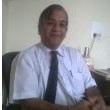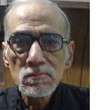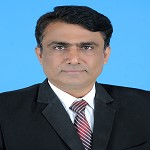Two pronotes executed by a person in favour of another person on different dates
 sahil gupta
(Querist) 20 October 2011
This query is : Resolved
sahil gupta
(Querist) 20 October 2011
This query is : Resolved
two pronotes executed by a person in favour of another person on different dates with separate transaction one suit for recovery will lie or two??
 kuldeep kumar
(Expert) 20 October 2011
kuldeep kumar
(Expert) 20 October 2011
misjoinder of parties and cause of action.2 suit will lie
 Raj Kumar Makkad
(Expert) 20 October 2011
Raj Kumar Makkad
(Expert) 20 October 2011
There is no legal hurdle if both cause of actions are clubbed because the suit matter and parties to to suit are same.
 prabhakar singh
(Expert) 20 October 2011
prabhakar singh
(Expert) 20 October 2011
The following case law may help you a lot in preparing your case not only for filling but also for conducting the case during trail:
Perikala Peturu. vs Nelapati Rebbamma And Others. on 5 February, 2002
THE HONOURABLE SRI JUSTICE E.DHARMA RAO
CIVIL REVISION PETITION NO. 3420 of 1985
5-02-2002
Perikala Peturu.
Nelapati Rebbamma and others.
Counsel for petitioners: Mr.Ravi Shankar Jandhyala, Advocate.
Counsel for Respondents : Mr. K. Harinath, Advocate.
:ORDER:
This Civil Revision Petition is directed against the order dated 19.7.1995 in Small Cause Suit No. 126 of 1991 passed by the learned Additional Subordinate Judge, Tenali, whereby the learned Subordinate Judge has dismissed the suit which was filed on promissory note Ex. A-1 and Transfer Endorsement in favour of the plaintiff therein, dated 10.9.1981 on another pronote dated 16.10.1989 i.e. A-2. While dismissing the suit the learned Subordinate Judge has observed that the plaintiff did not prove that the consideration was paid by him to late Prakasam under Exs. A-1 and A-6 i.e. promissory note dated 16.10.1989 (on which endorsement Ex. A-2 was made). It is also held that though Expert Opinion is available on record, no reliance can be placed on it on the ground that the said opinion dated 12.4.94 is not exhibited and the Expert who gave opinion is also not examined.
This order is attacked by the learned counsel for the petitioner contending that the learned Judge ought to have seen that the promissory notes were executed by the deceased and the suit deserves to be allowed; that the signatures on Exs. A-1 and A-6 pro-notes are true admitted signatures of late Nelapati Prakasam were sent to the Expert and the Expert has opined that they are one and the same and once the opinion of the Expert is available on record, it has to be considered as relevant piece of evidence and, therefore, the learned Subordinate Judge should have allowed the suit. On the other hand the learned counsel for the respondents contended that against dismissal of small cause suit, revision is not maintainable and right to appeal lies to the petitioner. It is also contended that in the absence of evidence of the Expert, any opinion given by him is of no evidentiary value and is inadmissible in evidence and, therefore, the Revision is liable to be dismissed.
To appreciate these contentions of the parties, I have gone through the entire material placed on record. As stated earlier the small cause suit was filed based on two pro-notes. Nelapati Prakasam, husband of the first defendant and father of defendants 2 to 5, borrowed an amount of Rs.2000/- on 7.8.1989 from the plaintiff for meeting family expenses and executed a promissory note, Ex. A-1, agreeing to repay the sum with 24% interest per annum; he again borrowed another sum of Rs.1500/- from one Yesubu, father of the plaintiff on 16.10.1989 for agricultural expenses and executed Ex. A-2 pronote agreeing to repay the same with 24% interest per annum. The said Praskaam died on 19.7.1991 intestate without discharging pro-notes debt. All the assets of the deceased devolved upon the defendants and they are in possession of the same. Hence, all the defendants are liable to discharge the amounts under the suit pro-notes from the assets of the deceased. Later Ex. A-6 is transferred on 10.9.1991 in favour of the plaintiff by his father, under Ex. A-2 endorsement. When the suit amount was not paid by the legal heirs of late Prakasam, notice was issued on 18.9.1991 and even after receipt of the notice, the respondents - defendants failed to pay the amount, petitioner filed the suit.
The second defendant filed written statement, which was adopted by the defendants 1,3 and 4 and 5th defendant remained exparte. The defendants denied the various allegations made in the suit plaint and contended that during the lifetime of late Prakasam, there was no necessity for him to borrow the amounts under the alleged two pro-notes and they must have been forged and brought into existence after the demise of Prakasam. It is further contended that the deceased never informed the same to the defendants during his lifetime. It is further denied that they have not inherited any property of late Prakasam. There is no cause of action for the suit and the suit is liable to be dismissed. On the above pleadings, the Court below framed the following three issues for its consideration:
1.Whether late Nalapati Prakasam has obtained loan of Rs.2000/- and Rs.1500/- on 7.8.1989 and l16.10.1989 from the plaintiff and his father respectively for his family necessities and whether the defendants are liable to pay the same to the plaintiff?
2.Whether the plaintiff is entitled to recover the suit amount as prayed for ? and
3. To what relief?
In support of the plaintiff's case, P.Ws. 1 to 5 were examined and Exs. A-1 to A-6 were marked. On behalf of the defendants - respondents, DWs 1 to 5 were examined and no documents were marked.
According to the plaintiff, A-1 pronote dated 7.8.1989 was executed by the deceased at the house of one Gayam Kotireddy of Valiveru village and at that time the deceased was also present; that Gayam Kotireddy readover the contents to the deceased and the deceased signed on the pro-note and then the plaintiff P.W.-1 paid the amount to Kotireddy who passed on the same to the deceased. The scribe Kotireddy signed on the pro-note and handed it over to P.W.-1 asking him to get some witnesses, then the deceased went out and found DWs 3 and 5 near rice mill and requested them to attest the pro-note. When they questioned, he informed that he borrowed a sum of Rs.2000/- and has received the amount. Then DWs 3 and 5 have attested the pro-note, Ex. A-1. It is further stated that in the year 1989, the deceased borrowed Rs.1500/- from father of P.W.-1 and executed pronote Ex. A-6 in his favour and the same was transferred in favour of P.W.-1 on 10.9.1991. The peculiar feature of his case is that the attestors of Ex. A-1 have not come to give evidence in his favour. One Merugamala Abraham attested Ex. A-6 and he also did not give evidence, because he was also afraid of the defendants. As stated earlier, the attestors of Ex. A-1 were examined as DWs 3 and 5.
On the basis of evidence of P.W.-1 to 5 and DWs 3 to 5, the Court held that admittedly in both the cases, the signatures of the attestors were obtained subsequently and DW-5 stated that he signed two months after the death of the deceased on Ex. A-1. There are contradictions in the evidence of P.Ws. 1 and 2. D.W.-3 deposed that he knows late Prakasam who died in 1991. He stated that they never approached him at any time in connection with obtaining loan of Rs.2000/- and he never signed on the pro-note and the defendants never threatened him not to support the claim of the petitioner. DW-4 another attestor of Ex. A-6 deposed that he did not sign on the pro-note Ex. A-6 and after seeing Ex. A-6 this witness denied his signature. DW-5 deposed that he did not attest Ex.A-1 with DW-3 and further stated that two months after the death of Prakasam, he signed on the pro-note at the instance of P.W.-1 at the house of P.W.-1 himself and he never enquired about the debt. Therefore, on the basis of the evidence of DWs 3, 4 and 5, who are attestors of Exs. A-1 andA-6 have not supported the case of the plaintiff and in the absence of any cogent evidence let in on behalf of the plaintiff, the Court below held that the plaintiff has failed to prove that consideration was passed on to late Prakasam under Exs. A-1 and A-6. On the second issue, with regard to the transfer of Ex. A-6 under Ex. A-2 in favour of P.W.-1 by his father, the reasoning given by the plaintiff that due to old age he is unable to attend the Court, the pro-note was transferred, was not believed by the Court below on the ground that P.W.-2 entered into the witness box and gave evidence. Therefore, disbelieved the said plea. On requisition from the plaintiff, the signatures on pro-notes Exs. A-1 and A-6 and the admitted signatures of the late Nelapati Prakasam were sent to Handwriting Expert, who opined that the signatures appearing on Exs. A-1 and A-6 and the admitted signatures of late Prakasam are one and the same. The report, dated 12.4.194 is neither marked nor the Expert was examined. In those circumstances, having regard to the decision of Allahabad High Court in Balakrishna Das Agarwal Vs. Smt. Radha Devi & Others (AIR 1989 ALLAHAD 133) wherein it was held that
"..the Expert has to be examined and his competency as Expert must be established and he should be subjected to cross-examination and the Expert's Report is not straightaway admissible without examining him. Of all kinds of evidence which are admissible, the opinion is of the weakest kind.."
the Court below did not consider the opinion of the Expert and dismissed the suit.
Dealing with analogous question, a learned Single Judge of this Court in Sher Mohammad Vs. Ali Khan (1) on a dismissal of the suit based on promissory note below Rs.3000/- and which is of a small cause nature, now it is Rs. 10,000/- as per amendment Act of 1999, held revision to High Court is not maintainable and appeal lies under Section 96(4) of the Code as appeal involves question of law.
In that case, the suit based on promissory note which was said to have been executed by the defendant for Rs.2,628/- was dismissed by the learned II Additional District Munsif, Vijayawada. The suit was of a small cause nature and the value of the suit, as stated earlier, was below Rs.3000/-. Having regard to the said fact, the learned Single Judge held that the plaintiff had right to appeal under Section 96(4) to the Appellate Court provided the appeal involves question of law.
As seen from the facts and circumstances of this case, no question of law is involved. The petitioner also failed to raise any substantial question of law. Therefore, applying the principle laid down in Sher Mohammad's case, I am of the considered view that only appeal lies under Section 96(4) of the Code and revision is not maintainable.
That apart, the Supreme Court in a decision Murarilal Vs. State of Madhya Pradesh(2) dealing with Expert's Opinion, under Section 45, 46, 73 and Sec. 114 of the Evidence Act has held as under:
"...We are firmly of the opinion that there is no rule of law, nor any rule of prudence which has crystallised into a rule of law, that opinion evidence of a handwriting expert must never be acted upon, unless substantially corroborated But, having due regard to the imperfect nature of the science of identification of handwriting, the approach as we indicated earlier, should be one of caution. Reasons for the opinion must be carefully probed and examined. All other relevant evidence must be considered. In appropriate cases, corroboration may be sought. In cases, where the reasons for the opinion are convincing and there is no reliable evidence throwing a doubt, the uncorroborated testimony of an handwriting expert may be accepted. There cannot be any inflexible rule on a matter which, in the ultimate analysis, is no more than a question of testimonial weight. We have said so much because this is an argument frequently met with the subordinate courts and sentences torn out of context from the judgments of this court are often flaunted..."
Applying the ratio laid down by the Apex Court in the above decision to the facts and circumstances of the case on hand, in this case except the self serving testimony of the plaintiff himself, no witness, even his own witnesses did not support his case and they denied their signatures and they also denied with regard to the payment of consideration to late Nalapati Prakasam. Having regard to these circumstances, the court below was satisfied, on consideration of Expert opinion alongwith all other relevant evident of Des 3,4 and 5, that the plaintiff has failed to prove that late Prakasam has received the consideration on execution of the pro-notes and was also not satisfied with the reasons of transfer of Ex. A-6 under Ex. A-2 in favour of the plaintiff by his father. Therefore, the court below was right in rejecting the suit of the plaintiff in the absence of the evidence of the Expert and even the opinion evidence of the Expert was also not exhibited.
As seen above, on both the grounds, the Civil Revision Petition is devoid of merits and is liable to be dismissed and is accordingly dismissed. No order as to costs.
?1 1991 (2) APLJ (HC) 335
2 AIR 1980 S.C. 531 �
 Sankaranarayanan
(Expert) 20 October 2011
Sankaranarayanan
(Expert) 20 October 2011
i agreed with all experts, more over mr prabhakar singh given with order
 Raj Kumar Makkad
(Expert) 20 October 2011
Raj Kumar Makkad
(Expert) 20 October 2011
The citation produced by prabhakar singh is not applicable on the facts of present facts. In the discussed case in the citation, proper evidence was not produced by plaintiff to tally signatures and even witnesses had not been produced in witness box so his suit was dismissed accordingly but the given case stand on entirely different footing.
 prabhakar singh
(Expert) 20 October 2011
prabhakar singh
(Expert) 20 October 2011
The citation was produced to support makkad who opined one suit for two pronote cases may be filed.In the instant case also same thing happened.
So far case in hand is concerned author has sought opinion if one suit for two pronote can be filed,makkad opined positive and i supported him but he himself seems to be confused now when he says the citation does not apply to facts,makkad ji there is no fact before us to compare the same with citation is an easy comprehension and giving the citation is with an objective what precaution the author should take while conducting the case so that no silly mistakes as crept in citation may be repeated,i am i clear to you makkad ji.
 sahil gupta
(Querist) 20 October 2011
sahil gupta
(Querist) 20 October 2011
Thanks for the reply and advice. Please provide me some citation/ case laws to authenticate the view provided above.(That two cases separate should be filed)
 Sailesh Kumar Shah
(Expert) 21 October 2011
Sailesh Kumar Shah
(Expert) 21 October 2011
author : sahil gupta
Search at:-
www.stpl-india.in
www.indiankanoon.org
www.supremecourt.manupatra.com
www.courtsjudgments.com
www.judis.nic.in
www.rishabhdara.com
